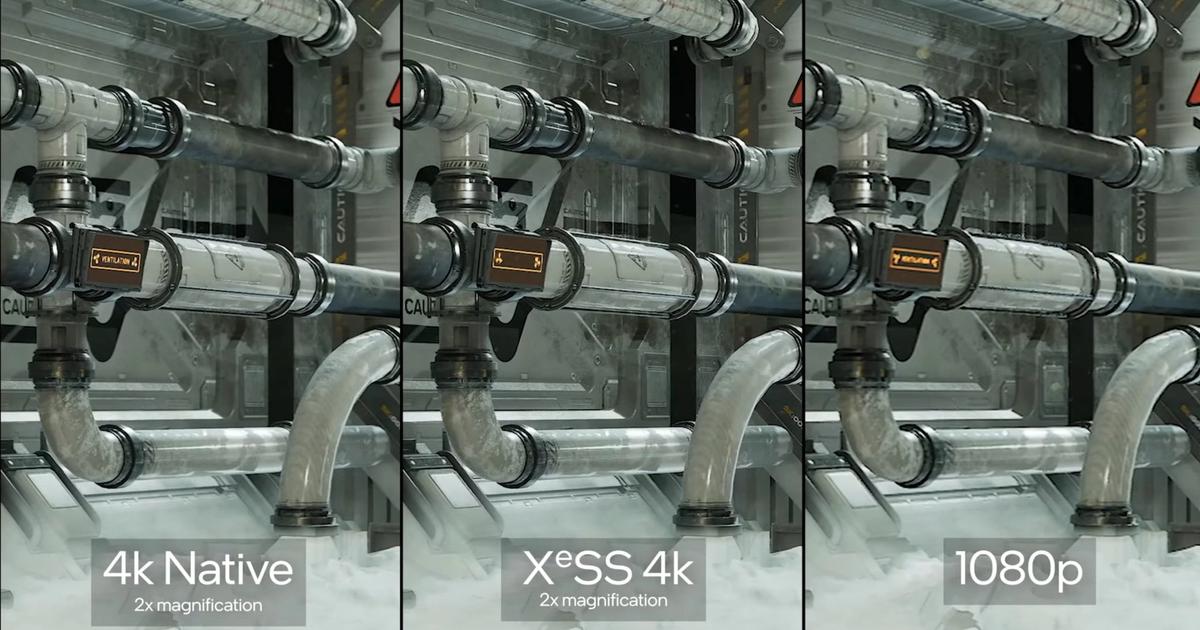Table of Contents
In the GPU space, Nvidia is King. Not only does the graphics card company pump out cards capable of impressive traditional rendering, but its DLSS post-processing is top-of-the-line. With Intel Arc entering the GPU battle, one question comes to mind: “Why fight Nvidia if you can't fight DLSS?” As it turns out, Intel can with Intel XeSS.
What is Intel XeSS?
Intel XeSS is a tool that can upscale games from lower resolutions to higher resolutions. Just like Nvidia’s DLSS, games running at, say, 1080p can be upscaled to 4K with very little difference to a native UHD image.
DLSS uses Nvidia's Tensor Cores in RTX cards to work. Intel's offering uses a very similar technology. Intel Arc GPUs are all equipped with Xe-cores that will handle software like this and real-time ray-tracing. Hardware-accelerated AI processing is also included with dedicated Xe Matrix eXtensions (XMX) tech.
Intel XeSS won't just be locked down to big, beefy graphics cards. Intel's dedicated graphics on future processors will eventually be able to run the upscaling software. This should help low-power devices keep up with gaming in the future.
Read More: Intel Arc officially announced as Intel's graphics cards debut
Is Intel XeSS better than Nvidia DLSS?
There's currently no telling of XeSS beats DLSS. Nvidia's version constantly improves; just recently the company released DLSS 2.1. However, Intel’s technology does at least put out some very competitive results.
The two technologies do seem to have the same shortcomings. Far away text and transparencies are a bit more fuzzy than native resolutions. However, this isn't really something that the player will notice while moving. Even if it was, it’s definitely worth double the performance.
Read More: Xbox announces Xbox Stereo Headset, a cheaper, wired Xbox Wireless Headset
Summary
For Intel's first stab, XeSS looks to be shaping up nicely. It turns out it does pay to nick Nvidia's DLSS creator for Intel XeSS. However, it does lead to one question: What the hell is AMD going to do next?
Compared to Nvidia and Intel, AMD has nothing to offer when it comes to video game upscaling. While FidelityFX is a decent tool to clean up an image, it's not in the same ball park as DLSS. Hell, it's not even in the same continent!
While Intel and Nvidia will likely be trading blows for a while, AMD has a lot of ground to cover. Hopefully, Team Red will find a way to keep up the fight.
Read More: Facebook's Metaverse for Work looks just as dull as you'd expect
Explore new topics and discover content that's right for you!
News





